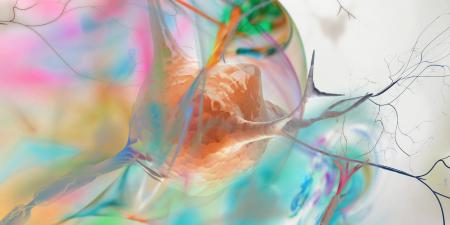Case
Raj is a fourth-year medical student completing a sub-clerkship in vascular surgery. His mentor, Dr. Hammond, is a highly respected surgeon with good technical skills and an established clinical researcher. Dr. Hammond has a gentle bedside manner; much of rounds is spent talking to patients and their families, educating them about specific diseases and reassuring them with positive, but realistic, assessments. In addition, he is a nurturing team leader, with high standards but generous praise.
Raj thinks he is doing a good job of establishing a trusting relationship with his patients. He has ample time to talk to them about their families, their overall health and their goals for the future. Raj is also a good listener; many patients feel comfortable talking with him, but he knows that he does not have the clinical answers so many of his patients are looking for. He is frustrated because his technical skills are still underdeveloped, and he knows that the time he spends perfecting his skills will take away from time with patients and their families. Raj wonders whether he can learn to be both compassionate at the bedside and technically versed.
Commentary 2
Raj’s dilemma is both philosophical and practical and certainly one that many medical students face. On the one hand, he knows he must continue to improve upon the technical skills necessary for providing good patient care—knowledge of disease pathophysiology, competence in diagnostic evaluation and current best practice methods for disease management—as well as an awareness of research developments in his clinical field. On the other hand, he has a keen sense of empathy and understanding of the patient-physician relationship and its central importance to practicing the art of healing. This case suggests that Raj understands these two components of patient care—technical skill (or the science of medicine) and what is referred to here as the “art of healing”—as somehow at odds with one another; too much time perfecting one aspect will detract from the other. How can such tension be resolved?
Ancient Words: Language Matters
To propose that technical healing and bedside manner are two sides of the same coin might be using the wrong metaphor to address Raj’s concerns. Rather than seeing these components of patient care as opposed to one another—on different sides of the coin—it is useful to reconsider the origins of such terms as “technical” and “art of healing” or “art of medicine.”
Around the fifth century B.C.E., when medical practice began to distinguish itself from pagan ritual, proponents argued that it be given a place among the disciplines called the technai. This word signified “art” or “craft” but also contained a concept of rigorous method; it is the origin of our word “technology” [1]. Among the works attributed to Hippocrates, a treatise entitled De arte includes a fierce defense of medicine’s place among the technai because it is governed by specific principles. Hence, from the origins of Western medicine, we can find important epistemological links between notions of “technical skills” and the “art of healing”—one does not exist without the other.
At the same time that medicine became established among the technai, philosophers were eager to clarify the role of morals in medical practice. For example, if a physician cures a patient of a disease, does it matter whether the physician is moral? Or in another vein, does technical competence supersede virtuous behavior (either within or outside of clinical practice)? The Pythagoreans believed that being technically competent was not enough; the physician must also be a source of moral guidance, thus the origins of the Hippocratic oath [2].
In short, the language we use matters in how we conceptualize the work we do as physicians. Rather than distinguish technical prowess from bedside healing, it may be more accurate to consider these as necessary elements on a continuum of patient care. Just as a successful cholecystectomy requires both clean extraction of the diseased organ and good postoperative care, patient care necessitates both technical skill and bedside manner. These two concepts of “technical skill” and “art of healing” are not opposed at all; they should be considered part of caring for the whole patient.
Back to the Present
How does this help Raj? Raj already exhibits a kind of reflective medical practice in that he is conscious of his place in the medical system, his interactions with patients and his own shortcomings. We are fortunate that such medical students exist, for we can at least rest assured that they will continue to push themselves to care for the whole patient and not just the clinical pathology.
Unfortunately in contemporary medical education, we often lack the ability to assess skills of caring for the whole patient. From the medical college admission test administered before medical school to the subspecialty board exams suffered after residency training, assessments tend to focus on the trainee’s ability to manipulate memorized clinical data. For some time now, many institutions have attempted to offset this with patient-focused educational programs. Often by employing standardized patients, narrative exercises or role playing, such programs have challenged students to improve interview techniques, bedside presence and empathic practice. The recent addition of the United States Medical Licensing Examination Step 2 Clinical Skills attempts to ensure that all medical students will be evaluated on patient interaction. Finally, the Accreditation Council for Graduate Medical Education-mandated professionalism competency for graduate medical education encourages similar efforts at the housestaff level.
But the simple fact remains that those intangible elements of patient care are just that—intangible. We still find it hard to agree on a definition of professionalism, much less measure it [3]. Arguably, even the development of quantitative tools such as the Jefferson Scale of Physician Empathy has done little to ensure that we can improve such subjective but important qualities as compassion [4].
The Solution is Staring Raj in the Face
Perhaps the most important character in this case is Dr. Hammond. Here is an attending vascular surgeon who, by Raj’s account, possesses the notable attributes of good technical skill and gentle bedside manner. Dr. Hammond educates patients and families as well as his students; his leadership inspires a strong sense of teamwork and last but not least he attracts Raj’s admiration. In other words, Dr. Hammond has the makings of an excellent role model or mentor.
Mentors have a tremendous capacity to influence clinical practice [5]. I had one such experience with my attending physician on the general medicine service. One Saturday when our team was on call, he asked the house officers if he could “borrow” me for the day. He explained that he had no other clinical duties that afternoon and that we could move from patient to patient together. He simply observed while I gathered medical histories, helped me perfect bedside exam skill and then listened carefully to my assessment and plan. He showed me how one must always sit at the level of the patient’s face and make some kind of physical contact—even if it was just a hand on a shoulder. These gestures, he told me, let patients know that you are interested in gaining their trust. At the same time, he was showing me that I could trust him as an educator.
At first glance, what I gleaned from this experience appeared centered on the patient-physician interaction, like the bedside manner that Raj considers. However, what surprised me much later was recognizing the impact that such mentoring had on my clinical acumen. Because of my respect for this attending physician —and the respect he gave me—I also sought to improve my clinical knowledge, to strive to perform at his level.
Many physicians can relate similar mentoring experiences that significantly influenced their education. In this case, Dr. Hammond appears no less able to foster Raj’s technical expertise and his bedside manner. Dr. Hammond seems an excellent example of what the term attending really implies: one who waits by or is present for the patient.
References
-
Jouanna J. The birth of western medical art. In: Fantini B, Grmek MD, coordinators; Shuggar A, trans-ed. Western Medical Thought from Antiquity to the Middle Ages. Cambridge, Mass: Harvard University Press; 1998:22-71.
-
Pellegrino ED, Thomasa DC. The Virtues of Medical Practice. New York, NY: Oxford University Press; 1993:184-186.
- Arnold L. Assessing professional behavior: yesterday, today, and tomorrow. Acad Med. 2002;77(6):502-515.
- Mangione S, Kane GC, Caruso JW, Gonnella JS, Nasca TJ, Hojat M. Assessment of empathy in different years of internal medicine training. Med Teach. 2002;24(4):370-373.
- Maudsley RF. Role models and the learning environment: essential elements in effective medical education. Acad Med. 2001;76(5):432-434.



